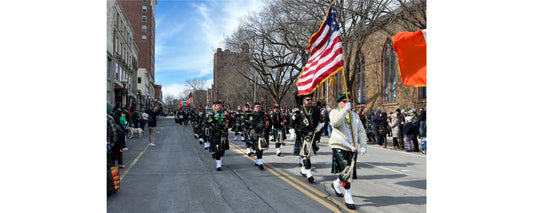I never got over Brontosaurus excelsus (“noble thunder lizard” for those of us who don’t speak ancient Greek). I don’t know when I first visited Yale’s Peabody Museum, probably at age 4 or 5, but that ginormous dinosaur floored me. It became my first stop on all subsequent visits and the first spectacle I would show to younger members of my family.
During the past few years, children haven’t been able to experience that local rite of passage. But those days are gone come March 26, when the Peabody reopens to the public after a once-in-a-lifetime renovation—and a promise of free admission for all in perpetuity. This will be a “soft” opening, meaning that not all the museum’s planned features—particularly those on the second and third floors—will be in place. A grand opening, meanwhile, is scheduled for April 17, even as all visitor time slots—part of a temporary booking system needed to manage what would otherwise be an overwhelming public response—have already been claimed through April 22.
Though the Peabody is landlocked and could not be enlarged outward, Centerbrook Architects and Turner Construction Company expanded it upward by adding a fourth floor devoted to administrative offices, freeing the former second-floor office area to be used for exhibitions. This focus on making better public use of the museum’s existing footprint also animates the new Central Gallery, a formerly underused space that will now showcase current research by Yale faculty and soft, relaxed seating for visitors.
“I welcome the idea that people may just come in and hang out here during lunch hour,” said Peabody director David Skelly during a recent preview tour. Skelly, also a professor of ecology at Yale, noted the museum has gained 50 percent more display space (from 30,000 to 45,000 square feet), with 19 separate galleries, improved sight lines, a greater variety plucked from the Peabody’s 14 million artifacts and a top-to-bottom refurbishment of older exhibits. Even the famed brontosaurus has gotten a makeover: a more active and elegant pose, a more proportionate head, new ventral ribs and 27 additional vertebrae in its now uplifted tail. All these changes reflect up-to-date research and fossil findings. “We now know,” for example, “that dinosaurs kept their tails in the air, because the bones of the tail fit together better when up and extended,” says Susan Butts, the Peabody’s director of collections and research.
The newly up and extended museum’s first-floor galleries now fit together better, too. Devoted to the history of life on Earth, they give visitors a walk through time starting with the oldest multicellular life and extending to the present. Visitors will first encounter an exhibit called Ancient Oceans that introduces the first floor’s two overarching themes, Butts says: “Life affects the environment and the environment affects life,” and “Extinctions change everything.” Most of these displays are drawn from the Peabody’s fossil collections in invertebrate paleontology. “We’ve reduced about 5 million specimens to 160 of the coolest,” she adds, noting that Peabody has the largest collection of sea scorpions in the world, part of which is now on display for the first time.
As visitors move from this gallery to the Burke Hall of Dinosaurs, a big red portal signifies a gradual mass extinction that killed 95 percent of all life in the oceans, whereupon a population of giant reptiles arose to fill the void. As it has since 1947, Rudolph Zallinger’s famed 110-foot mural The Age of Reptiles dominates the room, but now it’s accompanied by a clarifying timeline. “People used to think that the mural depicted a very busy day in the life of dinosaurs, when in fact it draws from different time periods,” Butts says. Special attention is given to adaptation, the traits these animals developed that made them suited to life on Earth, particularly the evolution of locomotion and flight.
Another red portal at the entrance to the next gallery, A World of Change, marks the sudden mass extinction of those giant reptiles 66 million years ago, when a meteorite hit Mexico’s Yucatan Peninsula. The main goal of this gallery, says the Peabody’s director of public programs Chris Norris, is to show “how you can look at the fossil record over the last 66 million years and see two profound types of change very important for the development of life on Earth.”
About 16 million years after the meteorite strike, different kinds of animal species began to appear. One of the first was the gastornis, a fearsome-looking giant flightless bird believed to be the forebear of our game birds and waterfowl. Though this beast was an herbivore, the Peabody’s life-sized recreation tells me I wouldn’t want to see one scarfing seeds at my birdfeeder along with the cardinals and chickadees.
The rise of new species was prompted by a gradual transition from the stable greenhouse environment of the Cretaceous Period in which dinosaurs thrived to our now drier, cooler planet marked by the development of grasslands and polar ice caps. This is illustrated in a second striking mural by Zallinger, The Age of Mammals, and by collected objects presenting evidence of this climate evolution. Believe it or not, palm trees and crocodiles once thrived in Wyoming, but that all changed, Norris says, around 25 to 35 million years ago, when the Earth’s environment completed its shift from a greenhouse to an icehouse.
The Human Footprint, the first floor’s final permanent exhibition space, takes visitors from the first appearance of mankind and traces our impact on ever-developing animal species as we—and they—began migrating around the globe. While this migration led to the further extinction of many animal populations, Skelly notes that the exhibit “also talks about the amazing ways humans have interacted with the environment that allow us to thrive—the development of agriculture, domestication of animals and conservation of natural resources.”
The Peabody’s only current temporary exhibition concerns our development of something more conceptual: human rights. It consists of one extraordinary object, the Cyrus Cylinder, created in the name of Persian Empire founder Cyrus the Great, and believed to be the first declaration of rights ever recorded. Dating from the 6th century BCE, it was originally found in fragments in the ruins of Babylon (now Iraq).
The cylinder, part of the permanent exhibition at London’s British Museum, rarely travels, but it has arrived at the Peabody because of the “Yale fragment,” a missing piece discovered during an expedition to Babylon two years after most of the cylinder was found. “The curator of the Yale Babylonian Collection gave it to the British Museum on long-term loan, which helped me convince them it would be wonderful to have here,” Skelly says. At some point during its six-month stay, the British Museum’s assistant keeper of the Department of the Middle East, Irving Finkel, will present a talk in the Central Gallery.
The Peabody’s second floor will eventually be devoted to galleries focused on human culture. One gallery already in place is devoted to the History of Science and Technology, which focuses on developments from the last 300 to 400 years in North America and Europe while maintaining a Yale-centered approach. Many of the artifacts in this collection have never been exhibited before. “Sometimes we focus on stories we don’t necessarily want to celebrate,” says Kailen Rogers, Peabody’s associate director for exhibitions. One such display takes a close look at the history of eugenics at Yale, spotlighting Robert Yerkes, a pioneer in the study of human and primate intelligence. Some of the equipment he used in intelligence testing are here, including a saliva measuring device he was given by fellow eugenicist Ivan Pavlov.
Other displays include a historical collection of scientific glassware and a collection called Seeing Is Disbelieving, a presentation of microscopes, magic lanterns, other optical devices and illusions that illustrates how visual evidence can both reveal and distort reality. A separate exhibit space will ultimately open with the second floor’s first temporary show, titled Mind/Matter, a collaboration between the Peabody and Yale’s Wu Tsai Institute of Neuroscience focused on perception and cognition. “This extends our reach,” Skelly says. “We don’t have the expertise to do such an exhibit on our own. We plan to do more collaborations of this sort.”
Second-floor anthropology galleries explore the cultures of ancient Egypt and Mesopotamia, including artifacts like the world’s first cookbook and a story by the first named author in world history, the Sumerian high priestess Enheduanna. A monumental commissioned artwork titled Eternal Cities, constructed by local Syrian-American sculptor, architect and restaurateur Mohamad Hafez, was a major departure from—yet also a reflection of—the much older objects around it. “He built a cityscape reminiscent of Damascus and other Middle Eastern cities, reflecting layers and layers of civilization across the millennia,” Rogers says. “It’s designed as a tribute to these cultures and places.”
Three thousand years of Mesoamerican and Indian culture are also represented in these galleries, including one piece very familiar to longtime visitors: a convincing recreation of a colossal head from the Olmec civilization of southern Mexico. The originals, studied in the 1950s by then-Peabody curator Michael Coe and housed in a museum he helped establish, date from the pre-Mayan era and weigh from six to 50 tons. Another classic artifact is a 1,000-year-old feathered textile from the Peruvian Huari empire, discovered in the 1940s and now fully refurbished and looking gorgeous.
By the end of this tour of the new Peabody Museum, my mind was reeling, awed by all the insight and information contained within and all that has yet to be incorporated. I was sorry to have to wait to see highlights from the Mineralogy and Meteoric Collection, featuring roughly 60,000 mineral, 5,000 meteorite and 100,000 rock specimens, or the gift shop, which I remember as one of the coolest in any museum—but they’ll be back.
Still, the next time I’m back at the Peabody, no matter who I have in tow or how old they are, I’m still heading for the brontosaurus first. You can remodel a museum, but not the kid within.
Written by Patricia Grandjean. Photographed by Dan Mims.







